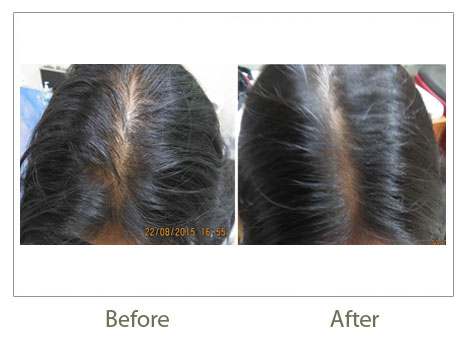Best Hair Loss treatment in Delhi
If you are looking for best hair loss treatment in Delhi or baldness treatment in Delhi then you are at right place as we offer hair restoration services like hair transplant and PRP.
At Pulastya’s Cadle, we have been performing PRP therapy as a proactive therapeutic option for male and female patients experiencing hair loss. PRP is an exciting non-surgical therapeutic option for patients who require stimulation of hair growth for hair loss conditions.
Recent scientific research and technology provides the medical community with new understandings of wound and tissue healing. As a result of these scientific studies, we recognize PRP is an all-natural autologous medical procedure performed in physicians offices for scalp, skin, and hair stimulation.
How does PRP work?
Human blood contains mesenchymal stem cells, and autologous blood products that contain essential and specific growth factors that assist in tissue regeneration and healing. Published medical literature from Europe and the United States confirms the safety and use of PRP therapy. It has been used a medial adjunct therapy for over two decades for skin and wound healing.

PRP therapy has established itself to be effective as a medical treatment modality in the specialty fields of oral surgery, neurosurgery, plastic and cosmetic surgery, sports medicine and orthopedics. It has been used extensively in these specialties for the last twenty years with generally positive outcomes and success. In the field of hair restoration, evidence supports PRP therapy as a promising treatment option to promote hair growth. While PRP is in the early stages of scientific research in hair restoration, PRP is not meant to replace current FDA approved therapies such as DHT blockers and Minoxidil. But it is a promising non-surgical therapeutic option for those patients with hair loss.
How do you perform the procedure?
Blood is drawn in our office as though you are having routine blood testing at your primary care physician’s office. The blood is spun in a centrifuge and the PRP is separated and removed from the rest of the blood.
The PRP is taken from your body and is specially prepared by spinning down the blood cells to a high concentration. Platelets are concentrated to 3X the normal blood values. The system eliminates granulocytes which hurts tissue regeneration and wound healing. An anesthesia block is given to nerves of the scalp so the patient does not feel any pain. The highly concentrated platelet rich plasma (PRP) is then injected into the scalp. The patient’s hair is then washed and the patient may drive home without any assistance. No sedation or any medication is given during the procedure to inhibit the ability to drive or use machinery.
Advantages of PRP
- A progressive non-surgical healing treatment in a variety of fields. A fraction of autologous blood with supraphysiological concentration of platelets and their associated growth factors.
- Upon activation, platelet-derived α granules release autologous growth factors involved in cell proliferation, angiogenesis, collagenesis and matrix remodeling (PDGF/ TGF/ VEGF/ EGF/ FGF/ IGF etc).
- Autologous (from patient’s own blood).
- Easy to use, rapid and effective system.
- Requires small sample of blood (10ml).
- Optimal Platelet Concentration for ALL specialties.
- Biocompatible, and xeno-free, minimizing safety concerns and rejection.
- Control of PRP volume by discarding PPP.
- Increases platelet concentration.
- Virtually eliminating granulocytes from the PRP, which are considered not beneficial in terms of regeneration process and may contribute to a catabolic effect by secreting catabolic mediators, including metalloproteinases.
- Eliminating undesired erythrocytes, which have been shown to significantly decrease fibroblast proliferation and augment apoptosis in vitro.
- Remnant of mononuclear cells present in the PRP assists in fighting infection and is thought to enhance the anabolic effects of PRP.
- PRP contains many growth factors that stimulate the hair follicle’s growth. PRP can be used preoperatively, intraoperatively, or post operatively. Some patient’s chose to have PRP performed every three (3) to four
- (4) months as early data suggests regular or semiannual PRP treatments that may stimulate hair growth.
The science of PRP
PRP contains special cells called Platelets, that can theoretically cause growth of the hair follicles by stimulating the stem cells and other cells in the microenvironment of the hair follicle. These special Platelet cells promote healing, accelerates the rate and degree of tissue healing and regeneration, responds to injury, and formation of new cellular growth. The primary purpose of using PRP in hair restoration is to stimulate inactive or newly implanted hair follicles into an active growth phase.
Inside the Platelets are many intracellular structures such as glycogen, lysosomes and alpha granules. These granules within the PRP contain clotting and growth factors that are eventually released during the healing and repair process.
PRP specific cells that causes hair growth include:
- Platelet-Derived Growth Factor (PDGF)—promotes blood vessel growth, cell replication, skin formation;
- Transforming Growth-Factor-Beta (TGF-b)—promotes growth of matrix between cells, bone metabolism;
- Vascular Endothelial Growth Factor (VEGF)—promotes blood vessel formation;
- Epidermal Growth Factor (EGF)—promotes cell growth and differentiation, blood vessel formation, collagen formation;
- Fibroblast Growth Factor-2 (FGF-2)—promotes growth of specialized cells and blood vessel formation; and,
- Insulin Like Growth Factor - (IGF)—a regulator of normal physiology in nearly every type of cell in the body
Does PRP Work?
Individual results vary with each patient. No guarantees of success can be made but PRP preliminary studies indicate patients can respond to PRP therapy. Some hair restoration surgeons apply PRP to the scalp for those patients who are not surgical candidates every three (3) to four (4) months. Other protocols will use PRP before or during surgery to insure graft survivability.
PRP is a potential emerging non-surgical based therapy for natural hair follicle stimulation for thinning hair. Larger clinical studies are pending but the current medical literature contains numerous optimistic results. Although a few controlled studies exist, anecdotal and case reports are the primary sources reflecting success with PRP therapy.
Who should not have PRP treatment?
Patients with history of heavy smoking, drug and alcohol use. Medical diagnosis such as platelet dysfunction syndromes, thrombocytopenias, hypofibrinogenaemia, hemodynamic instability, sepsis, acute and chronic Infections, chronic liver disease, anti-coagulation therapy, chronic skin diseases or cancer, metabolic and systemic disorders.
IS PRP FOR ME?
PRP has been used successfully in other medical and surgical disciplines for many years. The decision to use PRP is a personal decision and should be made after careful research, consideration and consultation with a physician. PRP is safe and natural because the procedure concentrates the good cells from your scalp and injects them directly back into the area where it is needed. There is absolutely no chance of getting a blood infection from another human being. PRP involves using your own cells that are not modified or changed, and it will not be rejected by your immune system.
Extensive clinical trials are not complete and medical data is not yet published to establish the absolute effectiveness of PRP therapy in hair restoration. PRP should not be considered a “cure” for hair loss and no guarantee can be made about its individual effectiveness. No claim of PRP efficacy in promoting hair growth can be made because there is no FDA approval that would allow such claims to be made.
Can I use other medical therapies concurrently?
Absolutely. In fact, we encourage it and prescribe PRP therapy as a compliment to a nonsurgical approach for those patients who are not eligible for surgery or who want to delay hair restoration surgery. As a non-surgical treatment option, we recommend PRP therapy along with Minoxidil and DHT blockers or for those patients who can not tolerate or have side effects with these medications.
Conclusion
In summary, PRP therapy offers the opportunity for hair growth for those patients who are not candidates for surgery or those patients wanting a more aggressive nonsurgical approach to treatment. For our surgical patients PRP therapy is performed at the same day as the hair restoration surgery.
Whether you are looking for additional hair stimulation, or are looking to have hair surgery with the addition of PRP, our Hair Restoration center is able to meet your needs. Results will vary from patient to patients, and PRP as a non-surgical option has not been offers patients with miniaturization and hair thinning improvement in hair caliber and thickness.






